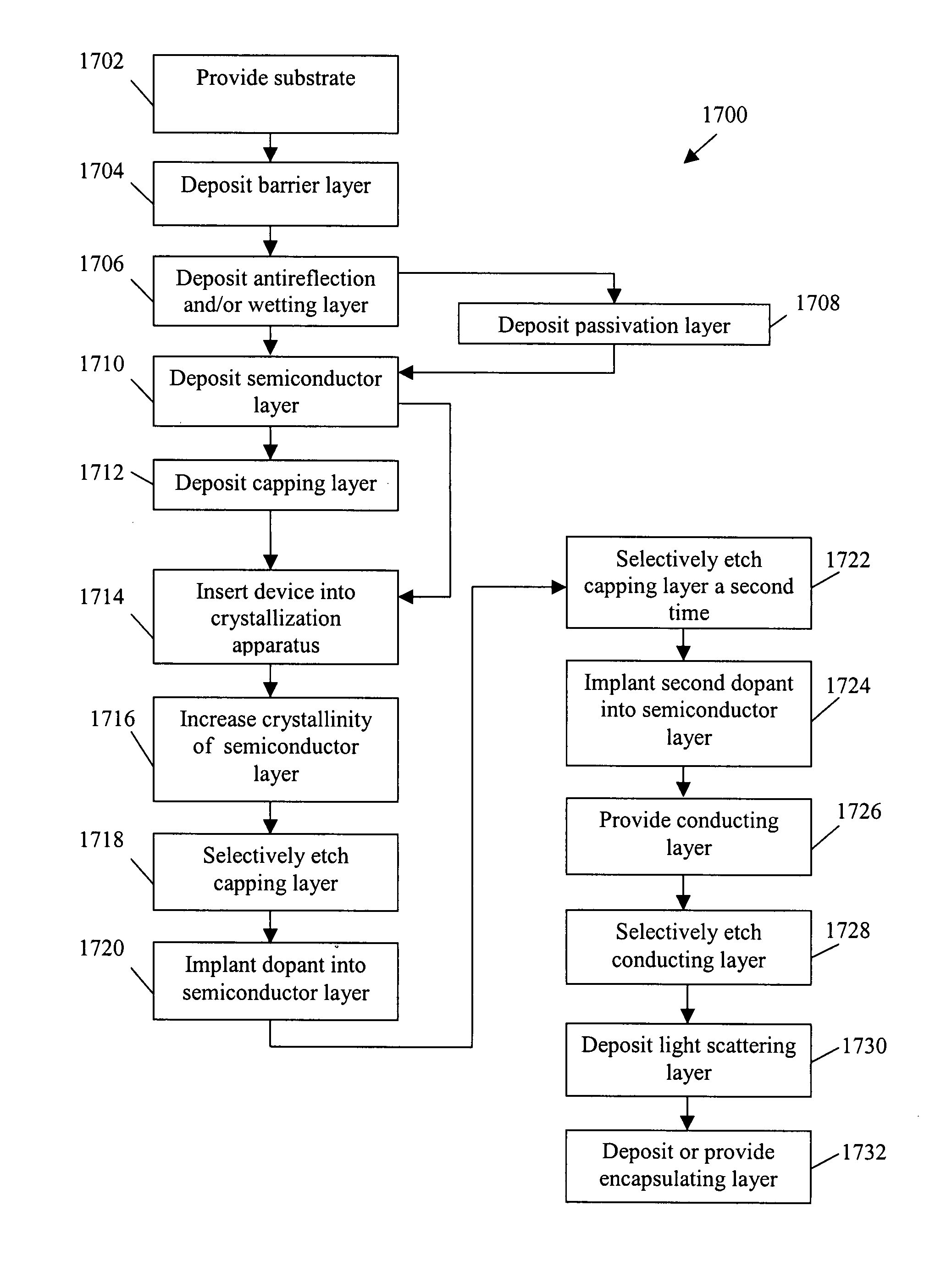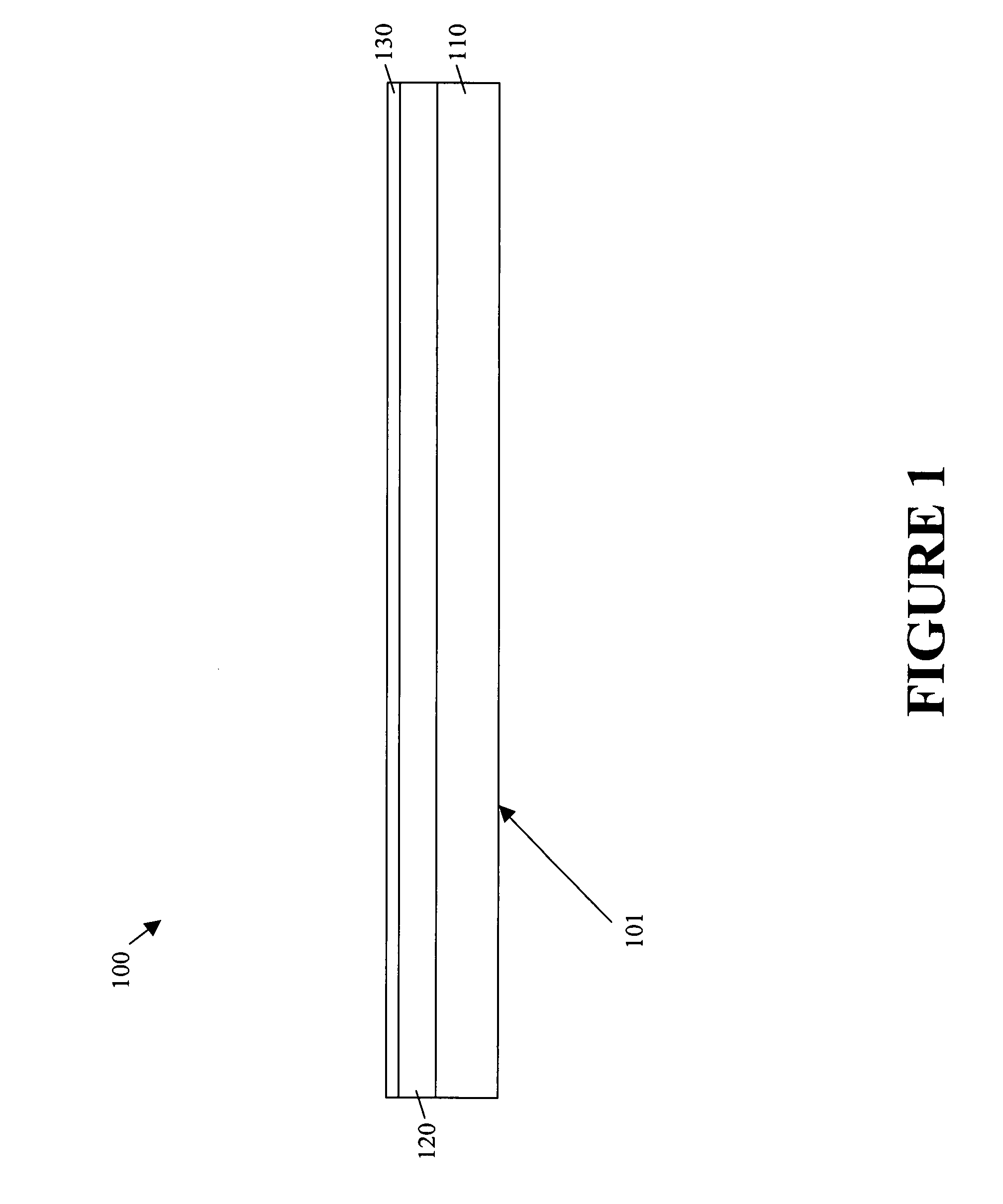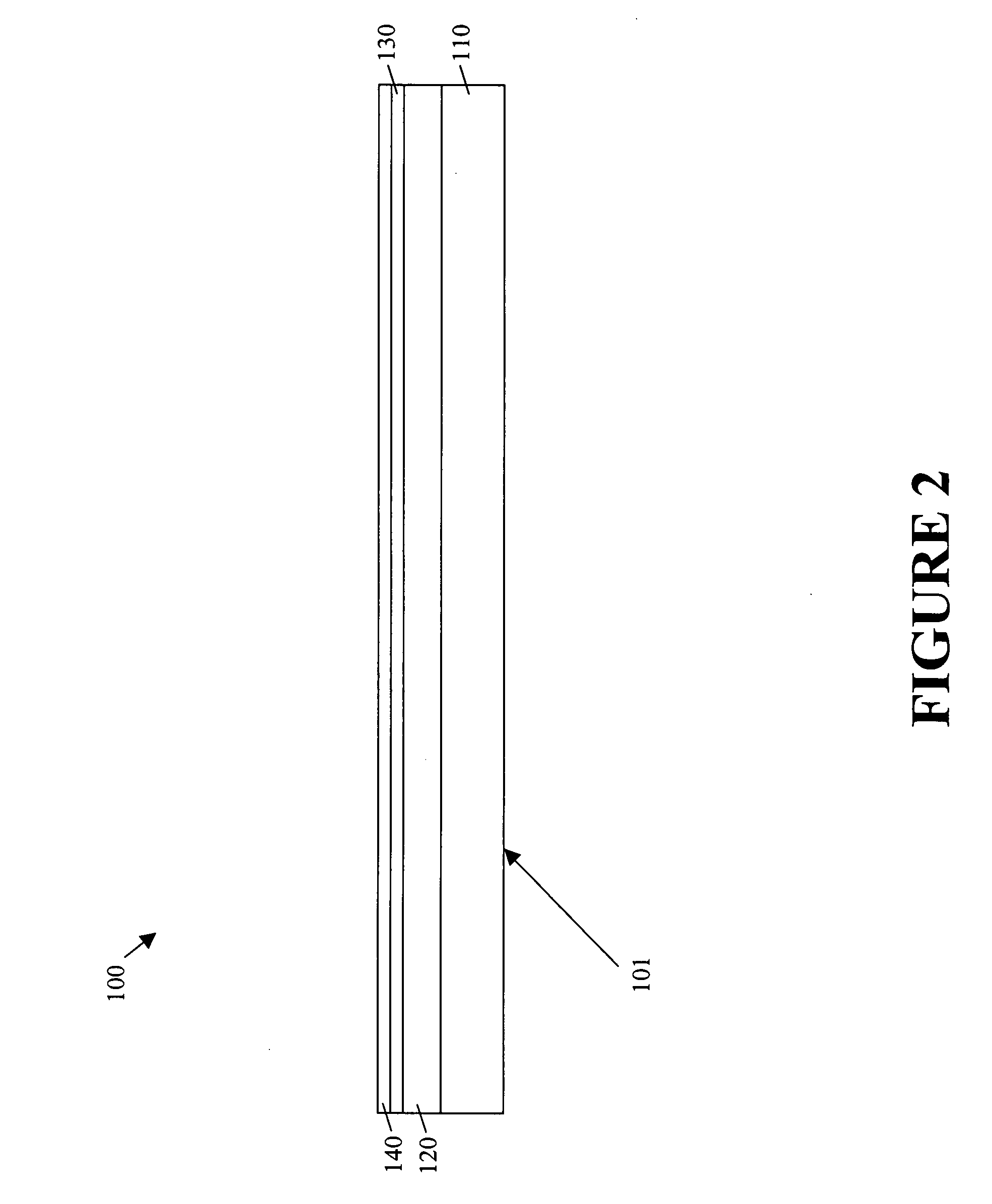Back contact device for photovoltaic cells and method of manufacturing a back contact device
a photovoltaic cell and back contact technology, applied in the field of photovoltaic cells, can solve the problems of high cost of producing cells and pv modules, lack of widespread use of pv cells as a source of electricity, and the addition of high purity wafers to the process of manufacturing pv cells and modules, and achieve the effect of increasing the crystallinity of the semiconductor layer
- Summary
- Abstract
- Description
- Claims
- Application Information
AI Technical Summary
Benefits of technology
Problems solved by technology
Method used
Image
Examples
Embodiment Construction
[0048]FIG. 17 illustrates a flowchart of a method 1700 for fabricating an all-back contact thin film PV cell in accordance with an embodiment of the presently described invention. Various steps illustrated in FIG. 17 and described herein are illustrated in other figures. For example, FIGS. 1-16 illustrate a cross-section view of a PV cell 100 fabricated in accordance with an embodiment of the presently described invention at one or more of the steps illustrated and described in FIG. 17. In general, cell 100 includes a side 101 that incident light strikes to generate electricity. For example, light incident to cell 100 at side 101 passes through one or more layers of cell 100 (including a substrate 110, as described below) and strikes a semiconductor layer 155 (also described below) to generate electricity.
[0049]In accordance with an embodiment of method 1700 and as illustrated in FIG. 1, a substrate 110 is first provided or obtained at step 1702. Substrate 110 preferably comprises a...
PUM
 Login to View More
Login to View More Abstract
Description
Claims
Application Information
 Login to View More
Login to View More - R&D
- Intellectual Property
- Life Sciences
- Materials
- Tech Scout
- Unparalleled Data Quality
- Higher Quality Content
- 60% Fewer Hallucinations
Browse by: Latest US Patents, China's latest patents, Technical Efficacy Thesaurus, Application Domain, Technology Topic, Popular Technical Reports.
© 2025 PatSnap. All rights reserved.Legal|Privacy policy|Modern Slavery Act Transparency Statement|Sitemap|About US| Contact US: help@patsnap.com



